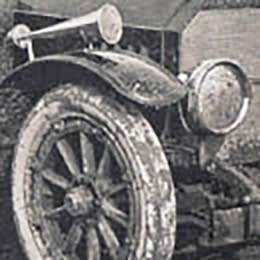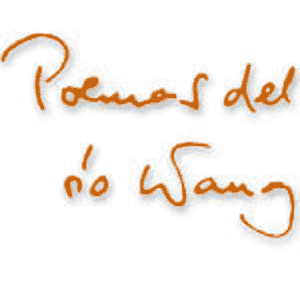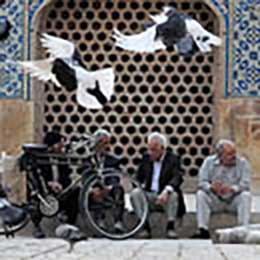
 It is no coincidence, therefore, that when this future finally seemed to arrive, the town of Szepesszombat contributed to the exaltation of the trodden-down loser with the erection of a memorial column. The inscription of the white obelisk standing in the Renaissance jewel-box main square of the German town proclaims in Hungarian: “1848. Built out of love toward our sweet Hungarian homeland, in memory of the Hungarian War of Independence, by Szepesszombat [and the] 16 towns of Szepesség/Spíš”. In the contemporary postcard below, printed in Hungarian, but written in German, the obelisk is also crowned with a turul, the mythical prey bird of Hungarian national romanticism.
It is no coincidence, therefore, that when this future finally seemed to arrive, the town of Szepesszombat contributed to the exaltation of the trodden-down loser with the erection of a memorial column. The inscription of the white obelisk standing in the Renaissance jewel-box main square of the German town proclaims in Hungarian: “1848. Built out of love toward our sweet Hungarian homeland, in memory of the Hungarian War of Independence, by Szepesszombat [and the] 16 towns of Szepesség/Spíš”. In the contemporary postcard below, printed in Hungarian, but written in German, the obelisk is also crowned with a turul, the mythical prey bird of Hungarian national romanticism.




After 1919, under the new Czechoslovak rule, the fate of such monuments was usually destruction, like of the monument erected at the other end of Spiš, in memory of the pivotal battle fought on 5 February 1849 on the Branisko Pass, which was knocked down by the Czech legionaries in 1919. The Szepesszombat monument, however, cleverly disguised itself. The gilding of the letters tactfully disappeared, the inscription faded into the limestone surface, and in order the new authorities should not bother deciphering it, a practical Slovak traslation of the Hungarian text was added on the front, right above the year of 1848:

Whether the turul also sailed away, or it was reinterpreted as a Czechoslovak sokol, is not known. What is certain is that after 1945 it was replaced by a red star, thereby tailoring the monument to the formal requirements of another change of regime. That the mimicry was well done, is proved not only by the fact, that the column has hitherto survived. But also by the testimonies of the Slovak researchers, who are satisfied with the Slovak inscription, rather than browsing the Hungarian one. In 1999, Ľubomír Lipták wrote a study about the monuments replacing each other for a century in Slovakia, in which, among other inaccuracies, he says about the monument of Spišská Sobota that it was erected in 1872, on the hundredth anniversary of the redemption of the sixteen towns of Spiš, which had been put in pawn in 1412 with the Polish king by Emperor Sigismund.
This kind of “contextual translation” of the inscription of monuments is no rarity in Slovakia. We have already such a case, and soon we will show another example of it.


























































































Add comment